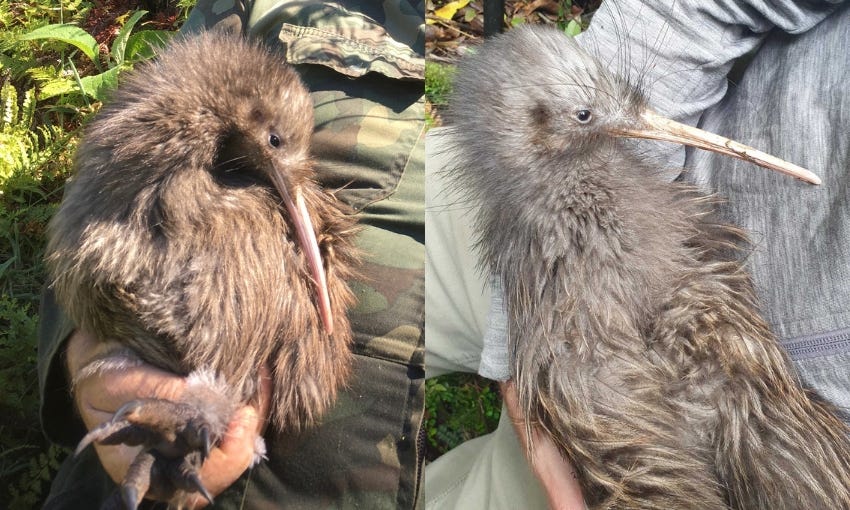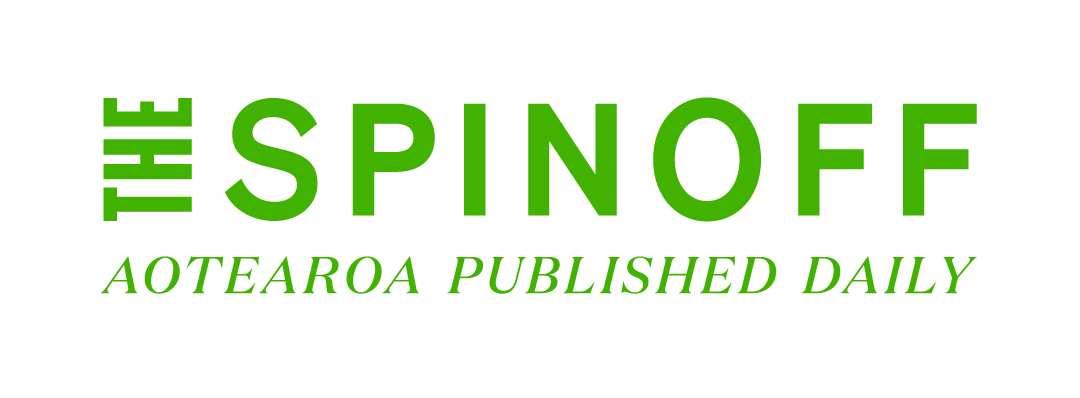Tracking methane emissions from space
A suite of new satellites is pinpointing methane leaks across the globe.
Kia ora! Welcome to Future Proof brought to you by Electric Kiwi.
A 3-kilometre-long methane plume detected in New Mexico, US, by NASA’s Earth Surface Mineral Dust Source Investigation mission. Image credit: NASA/JPL-Caltech.
Here in New Zealand, when I say methane, you probably think of farting cows and belching sheep. Indeed, agriculture is the biggest contributor to methane emissions worldwide. But coming in a close second is the oil, coal and gas industry, where methane can leak from wells or pipelines – or even be deliberately released in a process called “venting”.
A quick recap on methane: this planet-heating molecule is included under the umbrella of “greenhouse gases”. It doesn’t hang around for as long as its more famous cousin, carbon dioxide, but it has much more powerful planet-heating properties over its lifetime. It’s responsible for about 30% of the anthropogenic warming we’ve experienced thus far, and is continuing to rise at a scary rate.
The International Energy Agency reckons it’s technically feasible to reduce methane emissions from fossil fuel extraction by around three-quarters. But first, we have to know where these leaks and vents are occurring. Enter: the satellites.
‘Like speed cameras, for methane’
By the end of 2023, about two dozen high-res methane-detecting satellites will be in orbit, Bloomberg reports (paywall). The satellites, operated by a mix of private and non-profit enterprises, can pinpoint methane leaks down to individual facilities or even pieces of equipment. They do this by measuring sunlight, which bounces off the Earth’s surface and diminishes at certain wavelengths as it travels through a cloud of methane gas. Already a number of significant methane plumes have been identified, including “mind-boggling” leaks from Turkmenistan’s fossil fuel fields reported this week, equivalent to the UK’s entire annual emissions. Earlier this year, satellite data analysis revealed 1,000 “super emitter” sites including coal mines, oil and gas fields, and even landfills.
‘Nowhere to hide’
In fact, fossil fuel companies will often hire these satellites themselves to identify problem areas, in part to reduce losses of a valuable commodity, but also since it’s becoming a reputational risk to have your gushing methane leaks exposed in the public arena. One of those for-hire satellite outfits is GHGSat, with a number of microwave-sized units patrolling from orbit. In 2021, a pair of GHGSat satellites called Iris and Hugo pinpointed methane leaks from two landfills in Madrid, Spain, that proved embarrassing for city officials. “Our world is rapidly becoming a place in which methane emissions will have nowhere to hide,” Columbia University researchers wrote in 2020.
The new kid on the block with a Kiwi connection
Later this year, New Zealand’s first government-funded space mission will launch MethaneSAT, a methane-detecting satellite boasting “precise measurements on a global scale”. MethaneSAT is backed by the non-profit Environmental Defense Fund to the tune of $100 million, but New Zealand is running the Mission Operations Control Centre and funding a programme to use the satellite to accurately measure methane emissions from agriculture. Science and tech journalist Peter Griffin got the lowdown on the mission for an episode of RNZ’s Our Changing World. And for an interactive longread on methane detection satellites, including how MethaneSAT fits into the bigger picture, check out this piece on The New Yorker, part of their special climate solutions issue.
Water heating is one of the biggest contributors to home energy bills, not helped by the fact that most hot water cylinders in New Zealand can be heated up at any time of day, including peak times when power prices are at their highest. Electric Kiwi set out to save customers money on the cost of hot water heating by moving energy usage off-peak without giving anyone a cold shower – and the results are great.
Solar panels can help farms
Large-scale solar farms have often been pitted against other land uses, such as farming crops and livestock. But why can’t we have both? The concept of agrivoltaics – where crops or pasture are grown in the shade of solar panels – is taking off overseas. BBC tells the story of a lemon grower in southern Italy whose orchards are thriving under an array of solar panels, while this Canadian researcher discusses opportunities for agrivoltaics in Canada, where sheep-based solar farms are the most common. Here in New Zealand, research into the potential of agrivoltaics for sheep and dairy farms is underway.
Do carbon offsets protect intact forests?
You’re probably familiar with the type of carbon offset that promises to plant trees to compensate for greenhouse gas emissions, but there’s another type where people are paid not to chop down or burn existing trees. It’s the topic of an excellent pair of articles by Stuff’s Olivia Wannan. The first lays out the arguments for and against schemes that sell credits purporting to prevent deforestation. The second dives into a specific example, where one Southland-based project may have overestimated the impact of selective logging on regenerating forest, thereby calling into question the value of carbon offsets sold to protect it. Overseas, the country of Guyana has put the entirety of its forests into an offset scheme of similar nature, and sold the credits to a petroleum company for $750 million, according to Mongabay. And in truly wacky carbon offset programmes: there’s an offsetting project trying to put a price on the carbon-capturing prowess of whales.
Court actions filed on ETS, wetland loss
The Lawyers for Climate Action group have taken legal action against the government, challenging their decision to ignore advice from the Climate Commission on the Emissions Trading Scheme (ETS) last year. The group is asking the High Court to overturn a Cabinet decision to “artificially deflate the price of carbon” as it violates the Zero Carbon Act, Newsroom’s Marc Daalder reports. Meanwhile, the Environmental Law Initiative (ELI) has filed proceedings against Environment Southland for their failure to monitor wetland loss, act on identified wetland loss, and report on the effectiveness of their own rules. These rules, in place since 2010, are supposed to protect wetlands from drainage – yet wetland loss persists, ELI says. New Zealand has lost 90% of its original wetland extent, losing invaluable ecosystem services such as carbon sequestration and flood protection in the process.
A message from Toby Morris, illustrator and long time collaborator of The Spinoff If you love the work we do, please consider becoming a Spinoff Member. The truth is, without the support of our members The Spinoff wouldn’t exist. Help bring the important stories of Aotearoa to life by becoming a member today.
More stories:
As drought, disease and pests bite, coffee growers in Uganda are shifting from the classic arabica and robusta coffee plants to native liberica varieties, the New York Times reports. (I enjoyed a Coffea liberica brew at a coffeehouse in a small town in Flores, Indonesia – it tastes a bit different to your classic coffee but is still tasty!)
Toby Manhire reports from a meeting of Restore Passenger Rail protestors – the group who have been blocking Wellington roads in recent weeks
Colombia is set to ban fracking, a controversial method of extracting oil and gas from shale
A man swam 99 km in 33 hours from Aotea Great Barrier Island to Campbell’s Bay to raise awareness for the plight of the ailing Hauraki Gulf
In other ocean news, MPI’s draft Fisheries Industry Transformation Plan does little to impress environmentalists, Nikki Mandow writes for Newsroom
The government has also announced a select committee inquiry into seabed mining, with Labour declining to support Debbie Ngarewa-Packer’s bill to ban the practice. (More on seabed mining in a this Future Proof edition from last year)
BBC Future investigates what an ultra-low-carbon lifestyle looks like
An excellent photo genre: kiwi being cradled. On the left, a male from the Kiwi Enhancement Project at Maungataniwha Forest in Hawke’s Bay (image credit: corokid/iNaturalist CC BY-NC 4.0). On the right, Spencer from Taranaki having a health check (image credit: Kelvin Perrie/iNaturalist CC BY-NC 4.0).
To finish this issue, kiwi are returning to the wild. Last month, North Island brown kiwi from Sanctuary Mountain Maungatautari were released onto the lower slopes of Tongariro – 18 years after kiwi from this rohe formed the founding population at the predator-free Maungatautari sanctuary, now home to more than 2,000 kiwi. This week, more kiwi from Maungatautari, part of the Kōhanga Kiwi programme, have been winging their way down to Wellington for release into the hills to the south and west of the capital city. The kiwi to success? Predator control to keep our feathered neighbours safe from stoats. The kiwi to my heart? More hopeful stories like these.
Kia pai tō wiki
Ellen
Got some feedback about Future Proof or topics you’d like covered? Get in touch with me at futureproof@thespinoff.co.nz













For a future edition of Future Proof, you may like to consider how we rejig the economy to ensure humans live within planetary limits and avoided overshoot. Next Wednesday 17 May, Rod Oram will examine the weaknesses of degrowth in particular; and offer some other ways humanity can re-establish its right relationship with the Living Earth. The webinar is hosted by Our Climate Declaration.
https://www.ourclimatedeclaration.org.nz/limits_of_degrowth